» Home
» About
» Membership
» Journal
» Sparoza Garden
» Branches
» MGS Forum
» Seed Exchange
» Donations
» MGS Excursions
» Information
» Members' Gardens
» Book Reviews
» News & Views
» Contact
» Search
|
Robert Graves in Mallorca: a 1930s garden reborn
by Leonard Pearcey
photographs by William Graves
For the full article see The Mediterranean Garden No 49, July 2007.
Leonard Pearcey writes:
….it’s that typical parched-earth-and-planting garden of the island, and while you’re definitely not visiting the home of a gardener you nevertheless sense the important role it played in his life, a role backed up by the number of times he writes about it in his personal diary, begun on February 22nd 1935. That month he spends a lot of time with Sebastian the gardener planting mimosa, oleander and tamarisk…. In March the blooming of the blue borage and the yellow Banksia rose is recorded.
…come late September the yellow crocuses are out and the carob-tree blossom “stinking”, and in October “cut back carnations, planted cuttings of it. Took cuttings…of fuchsia.”
And so it goes on, planting hibiscus, agave, crocosmia and begonias, planning paths and walls, training the passionflower … considering that the fruit orchard and vegetables were supposed to be the priority, the number of references to flowers is surprising. 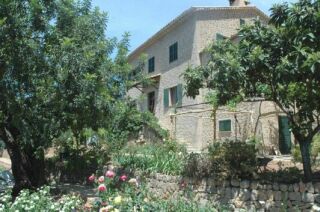
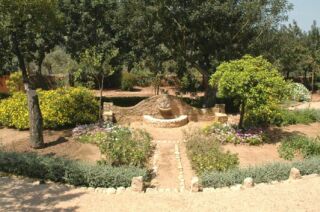
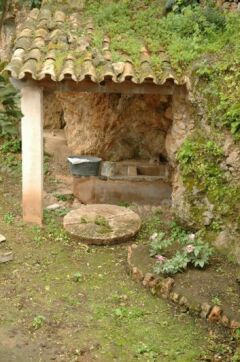
Laundry troughs in
the grotto
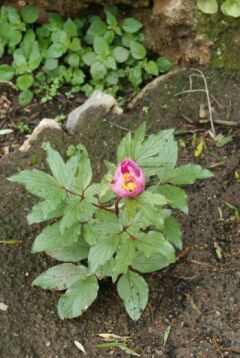
Paeonia cambessedesii –
Mallorcan peony
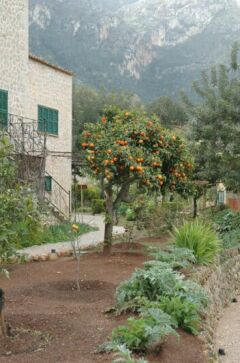
Bitter orange trees
...on May 16th 1946, what impression did the garden make on … the almost-six-year-old William? We know exactly, because it’s faithfully recorded in Wild Olives, his wonderfully evocative memoir of life in Mallorca with his father:
“I wandered along the neatly laid out gravel paths amongst fruit trees, which I later learned to recognise as apricot, peach, cherry, plum, loquat, crab apple, almond, lemon and orange. There were also several older huge knobbly carob trees, as well as the ubiquitous, gnarled, millennial olive trees. I sat on each of the stone benches I came to by the side of the path. I went past pergolas covered with grape vines, and mimosas and oleanders, also a royal palm and a tall monkey puzzle tree. Herbaceous borders all around were planted with pelargoniums and roses against a backdrop of grey cineraria. The vegetable garden, at the gravel-pit end of the lower terrace, held potatoes, tomatoes and tall, pale metallic green broad beans. An irrigation ditch for the vegetable garden ran next to the massive wall that bordered the main road and was fed by water from the depósito [a 250 cubic metre storage reservoir]. The valve to open the water was in a sump which formed a small pond. As I knelt to inspect it, a frog plopped into the water. I heard footsteps on the gravel path and looked up. Father was carrying my white sun-cap and put it on my head.”
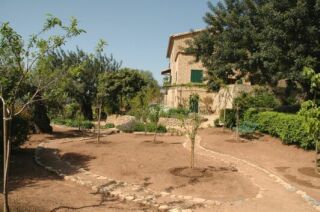
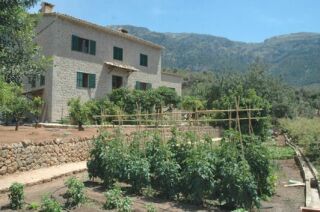
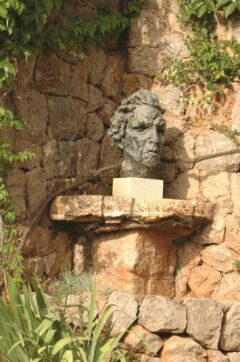
Robert Graves head by Carmen Alvarez
|


